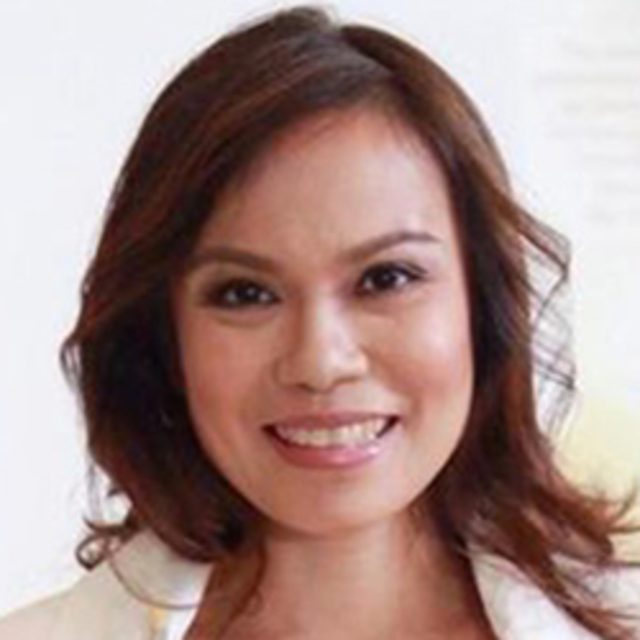SUMMARY
This is AI generated summarization, which may have errors. For context, always refer to the full article.
![[OPINION | Dash of SAS] Miss Spain is a woman](https://www.rappler.com/tachyon/r3-assets/612F469A6EA84F6BAE882D2B94A4B421/img/F68055F949F84D93BB3BA78BE6824A94/dash-of-sas-ms-spain-is-a-woman.jpg)

Miss Spain Angela Ponce did not win Miss Universe but she did have her own moment of victory. Ponce made history as the first transgender candidate and was given a special segment to highlight the symbolism of her participation in the pageant.
Ponce said she hoped for a world of equality and understanding, ending her speech: “I don’t need to win Miss Universe, I only need to be here.”
LGBTI advocate and SOGIE (sexual orientation and gender identity and expressIon) trainer Ging Cristobal admits to initially being pessimistic about how the pageant would handle trans inclusion, but came out satisfied. “A stand as to what a woman is was made and that included transgender women.”
The Miss Universe pageant was a poignant platform to uphold the trans community’s right to define and determine their gender expression and gender identity.
“When I saw Angela remove the sash that identifies her as a woman born and raised in a particular country, that was a gesture that demonstrated the kind of inclusivity the trans discourse would like to pursue,” said J Pilapil Jacobo, a transpinay university professor teaching literature and gender studies.
Some gay men were just as emotional about Ponce’s moment on stage but from the other side of the spectrum.
“I’m gay, but I think the LGBT community is becoming too demanding. This is not equality. Lahat ng bagay, kahit hindi para sa kanila, gusto involved sila. Kayo ang sumisira sa LGBT, mga over demanding [They want to be involved in everything, even in matters that don’t involve them. You are destroying the LGBT community with your being so demanding],” wrote one gay man on Facebook. This was one of the more benign comments from a gay man who posted on Facebook.
Other comments were more brutal and so vile in their intent to hurt and insult that they do not deserve to be repeated.
“This is a sign of an unfortunate reality within the LGBT community, especially among gay men. We have internalized the hatred, sexism and the stigma we experience, and inflict this culture on ourselves and each other,” lamented Jonas Bagas an activist for LGBT rights.
Hazards
The verbal assaults and online bashing are just a sliver of the hazards faced by transpeople. Worldwide data shows that transpeople are also targets of hate crimes defined as acts of violence that intentionally selects a victim because of who they are. Hatred and prejudice are the main motivations behind a hate crime and their objective is mainly to terrorize an entire group of people.
According to a report by Human Rights Council, sexual orientation is the third highest reason for committing a hate crime. (Race and religion are the other top two reasons.)
The Trans Murder Monitoring project prepared an interactive Google map showing the number of reported murders of trans and gender variant people (those whose gender identity or gender expression don’t conform to conventional definitions of masculine or feminine) since 2008.
At least 20 murders took place in the Philippines and most were against transwomen. Activists say that the number is likely higher.
Some acts of violence go unreported because of shame or because the victim does not want to be outed. In some instances, law enforcement is not properly equipped to identify a hate crime and will simply classify the incident as physical assault or homicide.
Sure, some people will justify their social media posts as expressions of their opinion, certainly not anything that is close to carrying out a hate crime. But think about how our words are read and perceived by others and how they can serve to validate their own hate and aggression.
“We obviously need more education within our own ranks. But this should also be a lesson for Miss Universe itself or for other institutions that are opening doors to the LGBT community,” said Bagas.
“It’s not enough to open the space, and they shouldn’t treat inclusion as a novelty, a boutique engagement. Inclusion is a bumpy process. There should be support for the community to address the resistance that they will face, and educate others why equality is right and necessary,” Bagas added.
We could all use more education about transpeople and the LGBT community in general. It’s not enough to we say we have and love gay friends because they are so funny or that we know transpeople and “ok naman kami.”
Tolerance is not acceptance. Tolerance is not the same as equality.
So what do acceptance equality look like? Start by checking out these SOGIE infographics prepared by AssortEdge, a media organization that specializes in explanatory journalism.
We often discriminate against people we don’t understand and don’t know or who we think are totally different from us.
Follow these LGBT advocates on Twitter. We have much more in common than you think.
Jonas Bagas, LGBT activist
https://web.facebook.com/jonasbagas
Twitter: @JonasBagas
Geena Rocero, transwoman and model
https://m.facebook.com/geenarocero/
Ging Cristobal, ASEAN SOGIE Caucus
https://web.facebook.com/ging.cristobal
J Pilapil Jacobo
Professor, Gender Studies
Niccolo Cosme, Photographer and founder of The Red Whistle Campaign
Twitter: @NiccoloCosme
Meggan Evangelista, transwoman and LGBT activist
https://web.facebook.com/ako.oo.ako
– Rappler.com
Add a comment
How does this make you feel?
There are no comments yet. Add your comment to start the conversation.